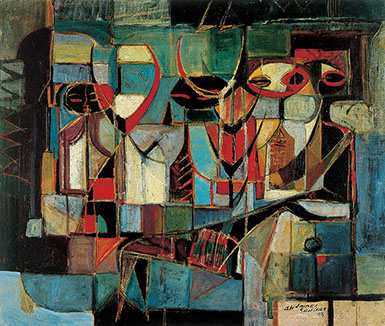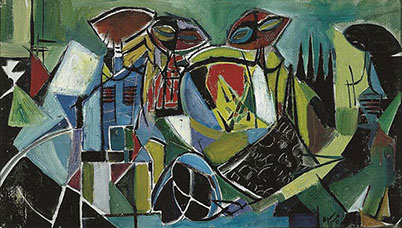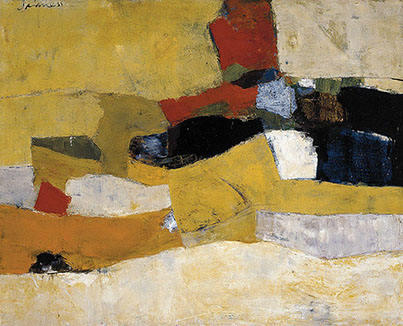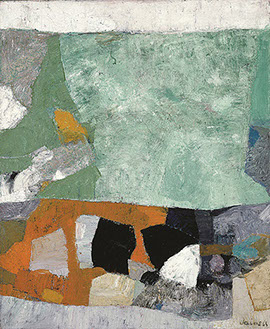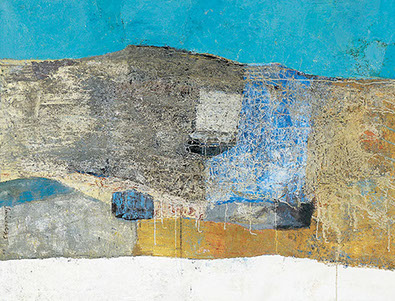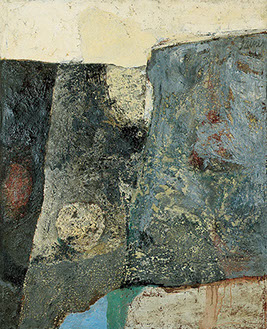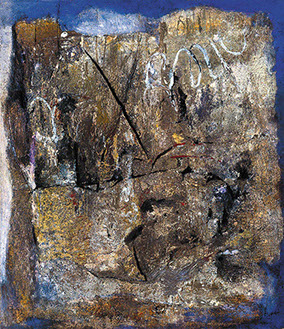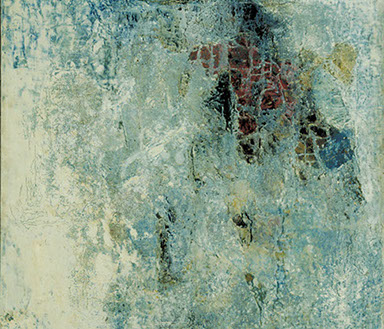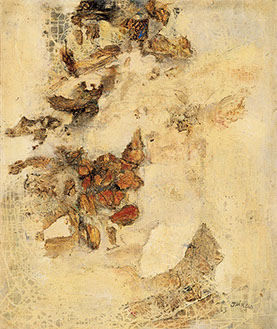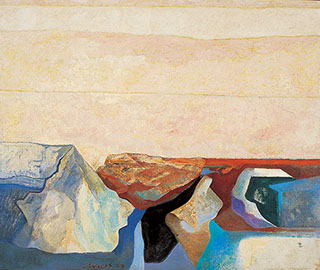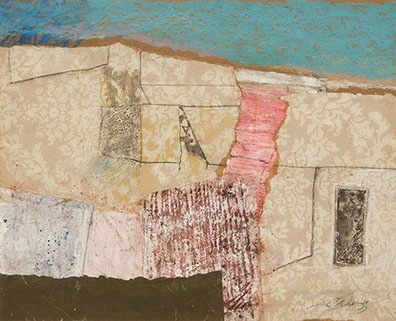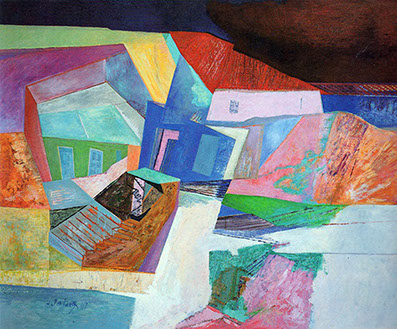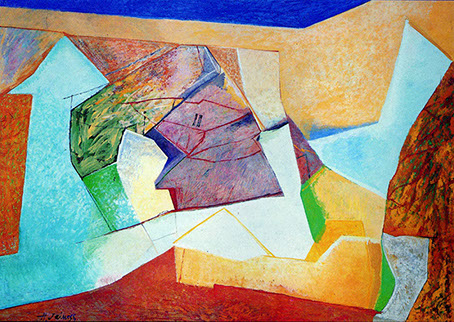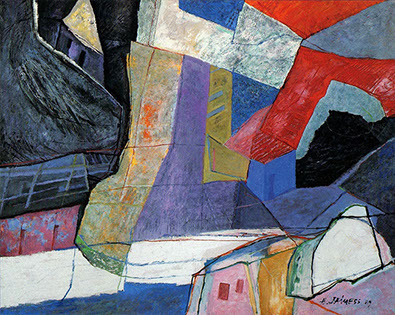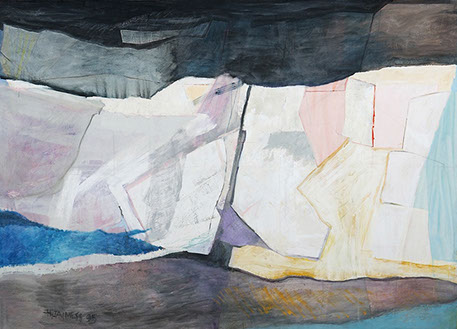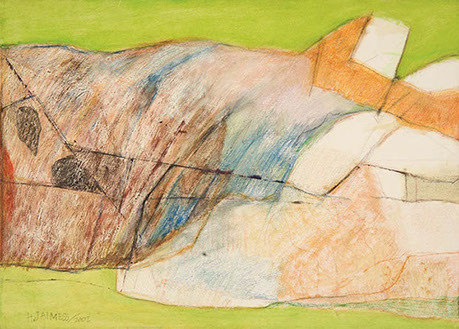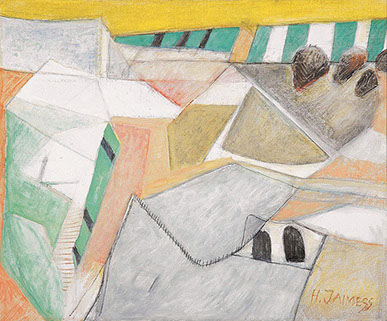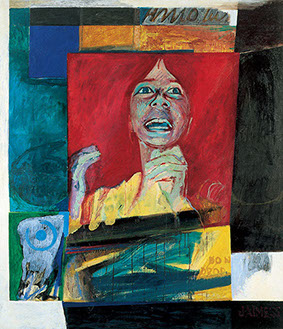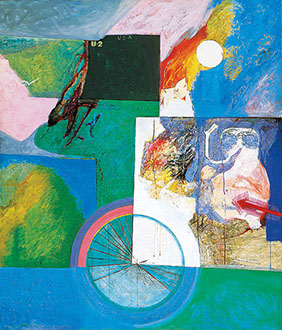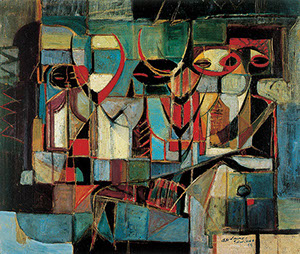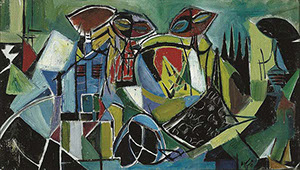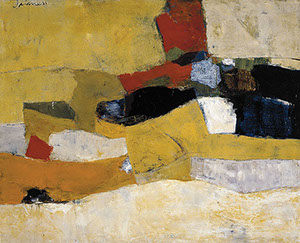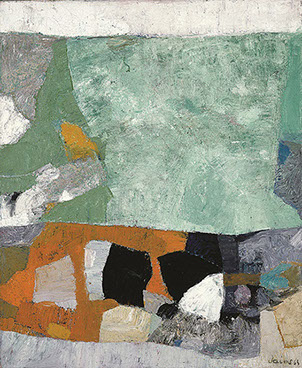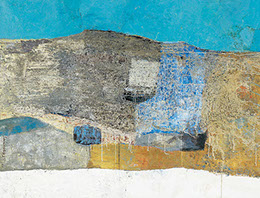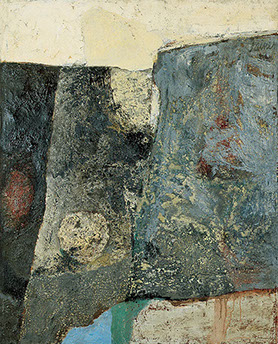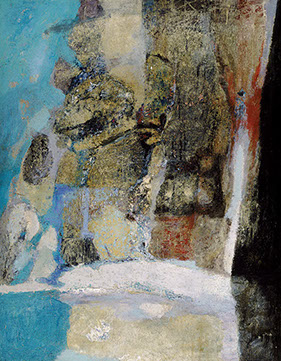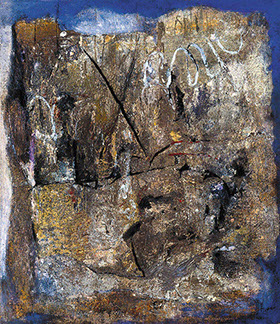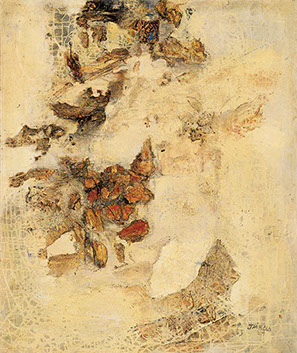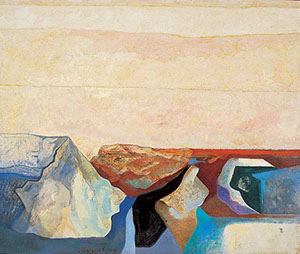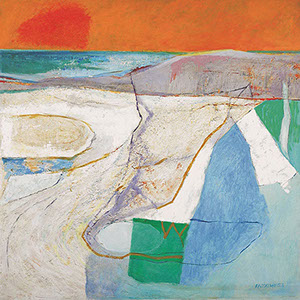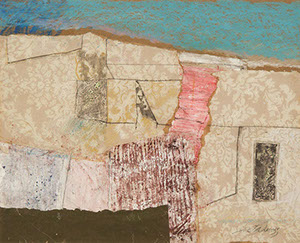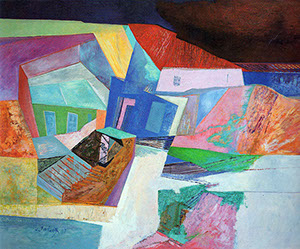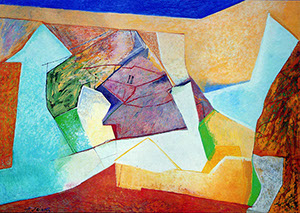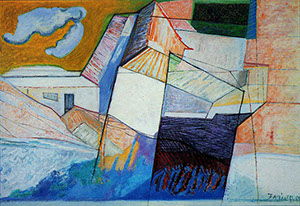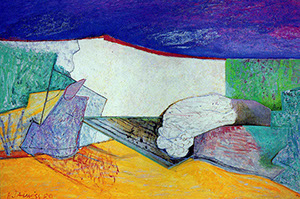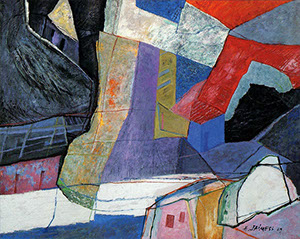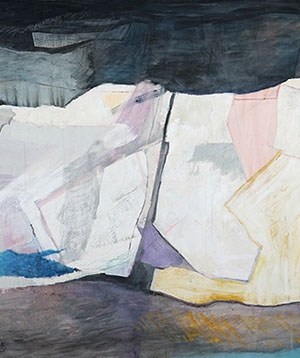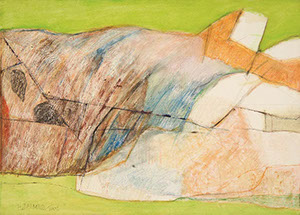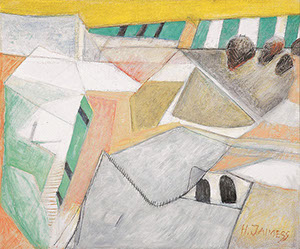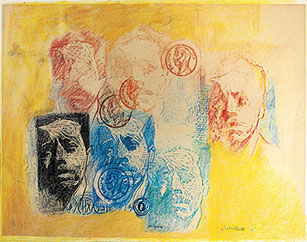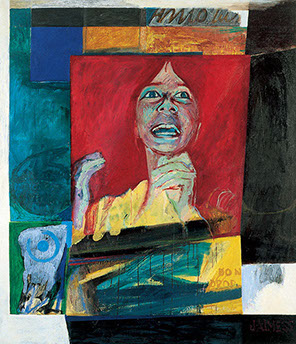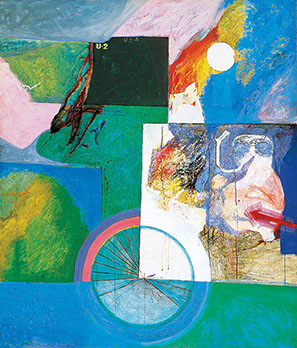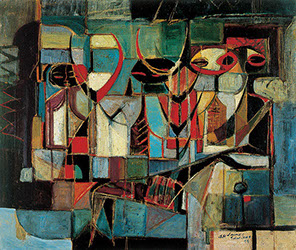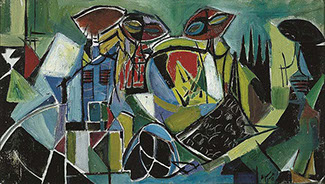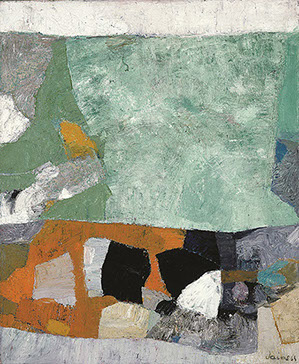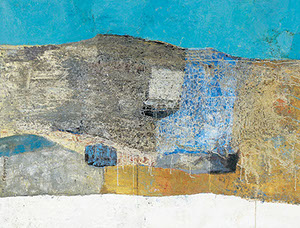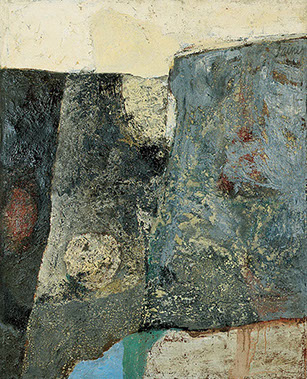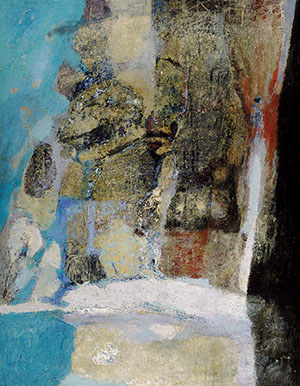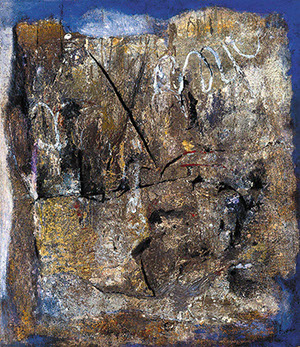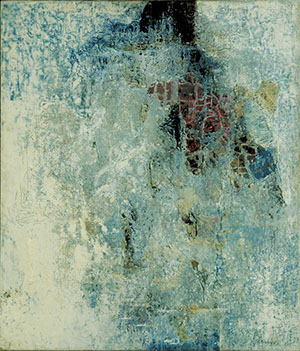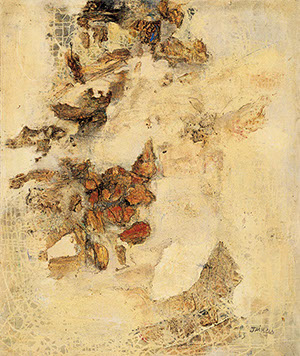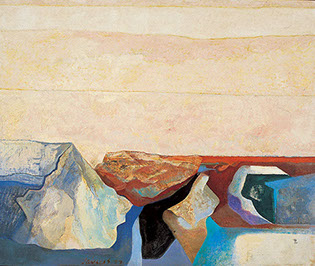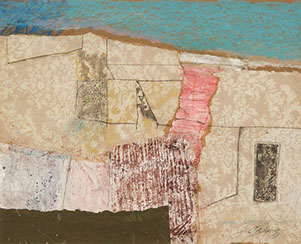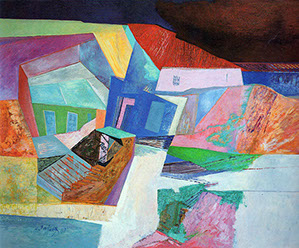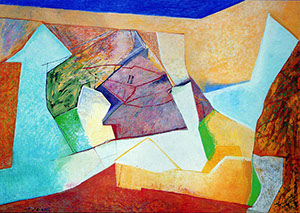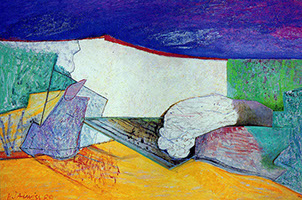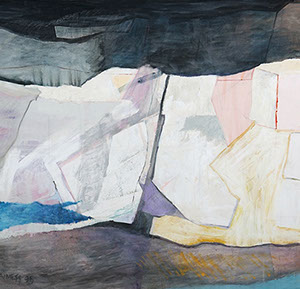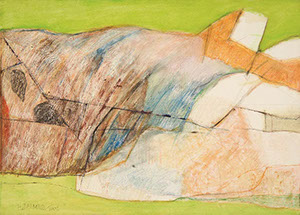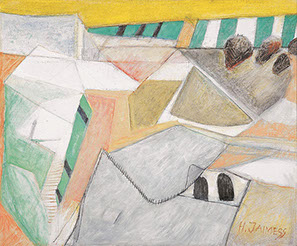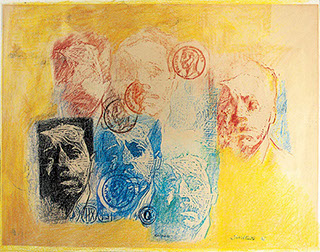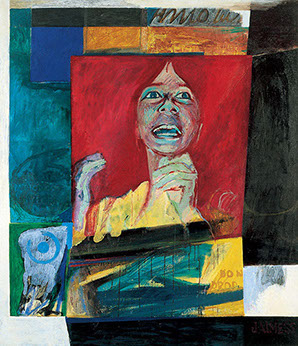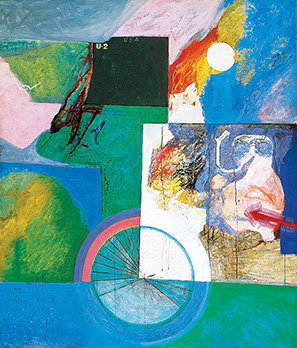Vernacular Stylization
Lyrical Abstraction
Informalism
Pop Art Incursions
Psychological Landscapes
Oblique Villages
At this stage, Jaimes Sánchez joined the framework of expectations that were woven around the Taller Libre de Arte, which were related to his intuitive search for a formal and chromatic freedom that resized the exercise of figuration. This group of young artists, sponsored in part by the national government, pursued, in one of its most important aspects, the preservation of content associated with the Venezuelan and Latin American cultural heritage, but with a stylization close to the limits of a sensitive abstraction. Along this path, Jaimes Sánchez is oriented to assume subjects of folklore, enunciated through the geometry of the figure and a predictable use of chromatic climates. The combination of all these elements led to the possibility of other ways of knowledge for the sensitive production of signs in the Venezuelan artistic sphere, based on a respectful relationship with the ancestral in its pre columbian or popular aspect.
Vernacular Stylization
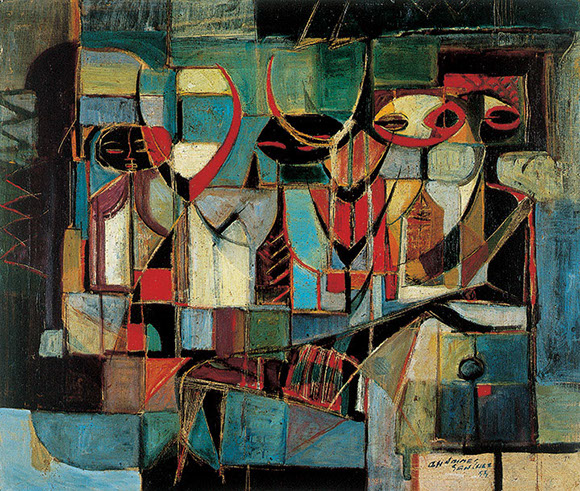
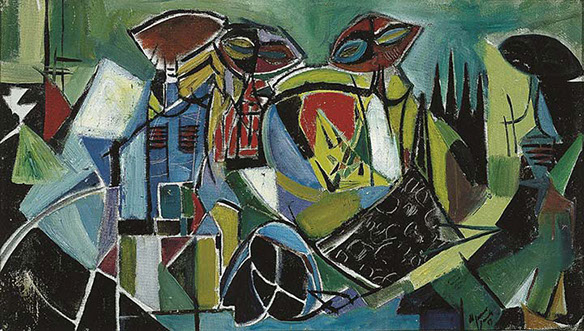


Perro y diablos,1953. Private collection.
Grupo familiar.1953. Colección Mercantil, Caracas.
Lyrical Abstraction
From the compositional and thematic structure of the landscape, the artist proposes an overcoming of the genre in its condition of transcription of reality, in favor of an evocation of contents linked to a wider symbolic repertoire. The lyrical component of his work and, of course, the technical and material aspects linked to the tradition of painting make this suggestion of elements of the referential world unavoidable, so there will not be an extreme search for non-representation, as it was for other Venezuelan artistic groups. On the contrary, much of the attribute of his work will consist of that inevitable power of reminiscence, and the inevitable link between a supposedly significant autonomy of the plastic elements and the associations that the viewer can invariably or need to establish with material and symbolic reality. The direction of his painting will be marked by the influence of Serge Poliakoff, especially by the "landscapes" elaborated in great and pasty planes, which, according to Dore Ashton, allow him to capture the rhythms and structures of the landscape, to be submitted to the rules of abstract composition (Ahston, 1958).
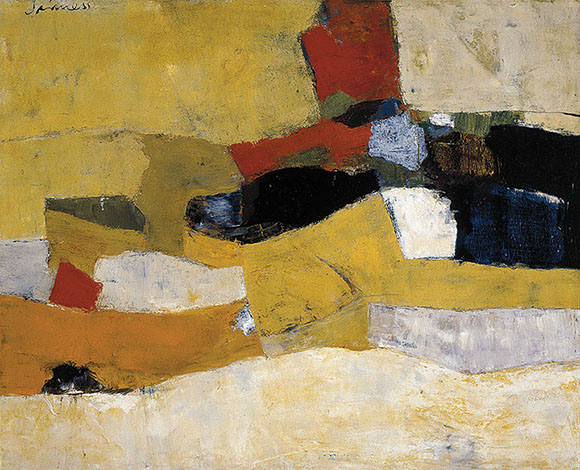
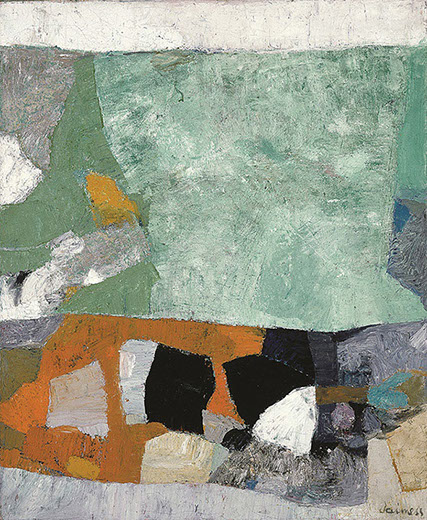


Potrero, 1959.Colección Mercantil, Caracas.
El río, 1959.Colección Mercantil, Caracas.
In his informalist period coincide, on the one hand, the purely abstract continuation of his work in Paris and the United States, and on the other, the force with which these expressions of what was called "new art" burst in Venezuela. Precisely because it is an artist whose European transit was made under the so-called Paris School, and especially Nicolas de Stäel and Serge Poliakoff, it is possible to see in his canvases of this stage a constructive presence at the bottom of his expansions of matter and color, which will gradually disappear to throughout his production.
Informalism
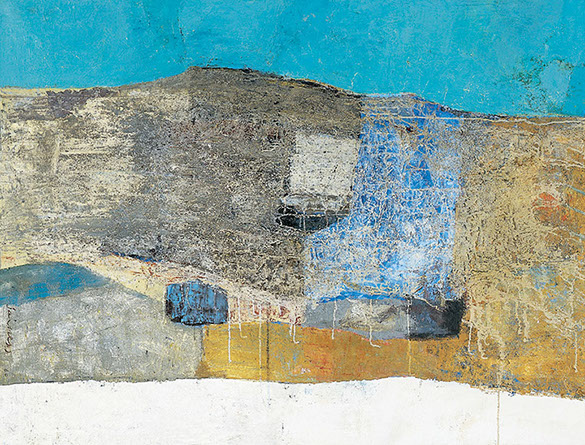
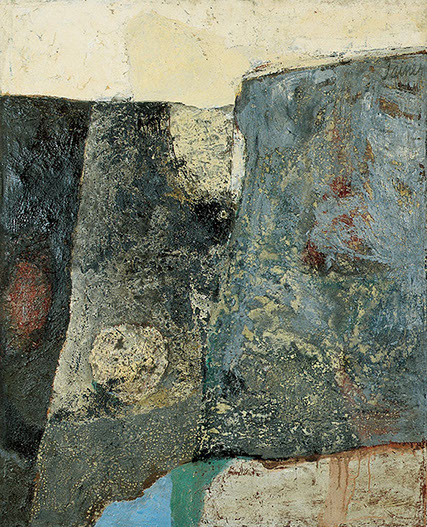
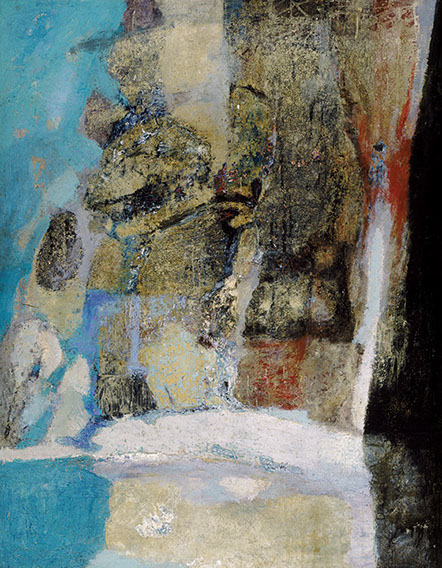
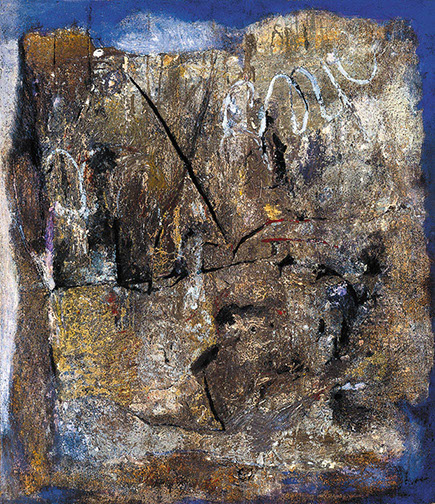
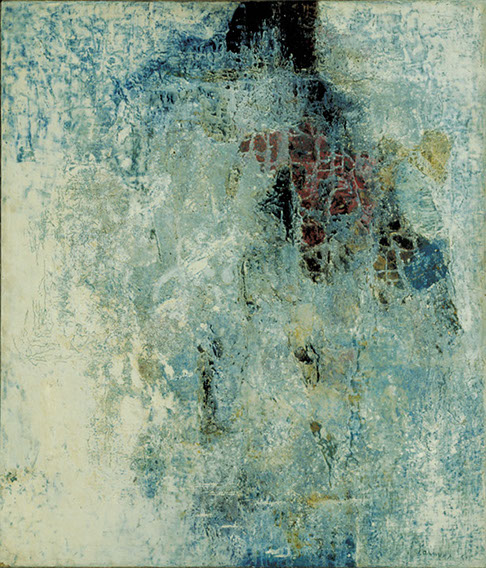
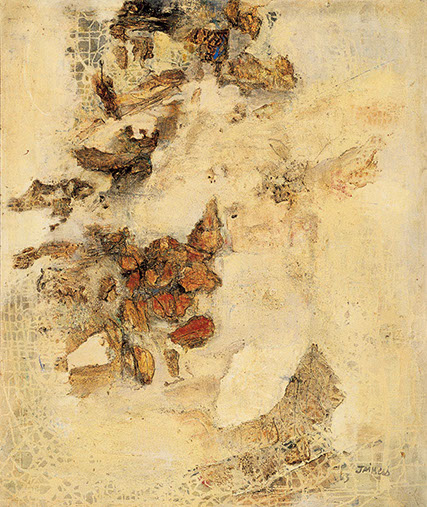






Cerros 1960. Private collection.
Origen salino,1960.Colección Galeria de Arte Nacional, Caracas.
Bancal, 1960.Colección Galería de Arte Nacional, Caracas
Fragmento de tierra,1961. Colección Galeria de Arte Nacional, Caracas.
La tapia de cal, 1961.Private collection.
Exterior N°4, 1963.Colección Galeria de Arte Nacional, Caracas.
Pop Art Incursions
Of this stage it emphasizes the return to the use of the textured chromatic planes that remember in another context his first work of Paris.The novel element in his case is the incorporation of letters and numbers made with template, and certain strokes of the brush that refer to a calligraphy sealed, as seen in Homenaje al espacio interior. In the same way, in other examples he uses labels and brands of mass consumption products, and in works like Amo tus años locos or Autorretrato múltiple the presence of the human figure arranged in the vibrant space of the plastic framework produces a bewilderment that increases the enjoyment. This experience was for Jaimes Sánchez the approach to a kind of imagery of modern life that surely owed much to his appointment in 1964 as director of the Instituto de Diseño de la Fundación Neumann, and put him in contact with new generations of artists, techniques of serial reproduction and a spirit of renewal of the teaching of art that greatly influenced his work.
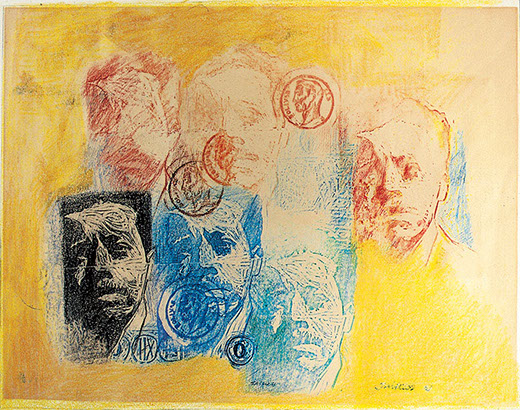

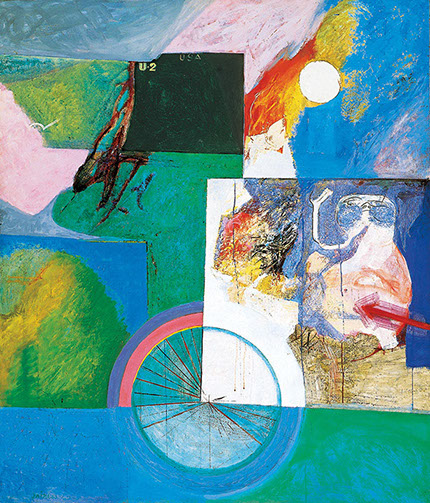



Autorretrato múltiple, 1965.Private collection.
Amo tus años locos, 1965.Colección Galería de Arte Nacional, Caracas
Au revoir la luna, 1965.Colección Galería de Arte Nacional, Caracas
In the early 1970s, Jaimes Sanchez again abandoned the use of referents in his painting, so that the viewer could establish associations through his perceptive experience. It is a stage of profound introspection in which the absence of recognizable objects of the material world does not prevent the symbolic link with the landscape genre, but this time with a constructive freedom and a power of evocation such that it influenced the convenient title of Psychological Landscapes. In this case his painting assists in the re-encounter of the road traveled from his first stay in Europe, thus merging on the canvas the contributions of the lyricism of the fifties, the material research of the sixties, and a greater sense of the risk of maturity achieved as artist. The presence of all these antecedents based the compositive efficiency of the work on the resulting tension of all the forces that were put into play, as can be seen in the subtle balance that sustains pieces such as Paisaje mural I and Paisaje-loma. Part of its mystery is due to a sort of conscious automatism that persists in its language.
Psychological Landscapes
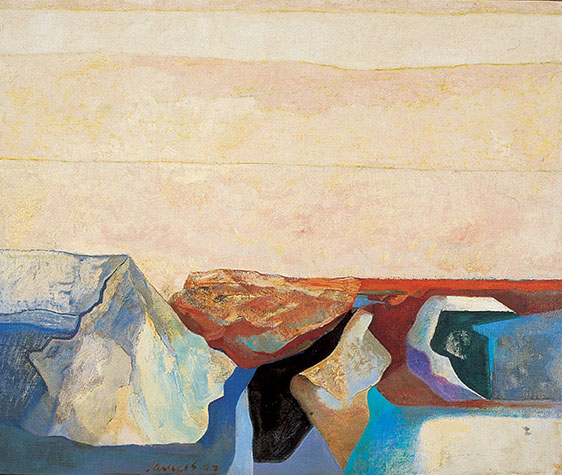
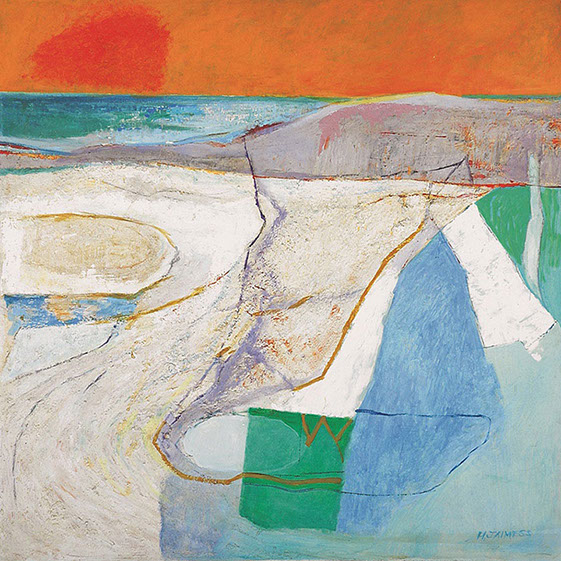


Paisaje mural I, 1977.Colección Galería de Arte Nacional, Caracas
Mar y arena, 1978.Private collection.
From 1985, Humberto Jaimes Sánchez returns to face in his work with the material world of the objects, and in particular to investigate the associations with the landscape that his painting has maintained since the fifties. The constructive component observed in the layout of the color and matter planes of his previous stages serves as support for the figurative display of houses, ranches and mountains, which although they were suggested remotely in his previous painting, are now integrated into the plastic universe created by the artist. When integrated, they produce an unusual harmony and a defiant balance that, as well as it refers to the enchanting imperfection of naive art, likewise speaks to us of the mastery of Jaimes Sánchez in the use of color and in the creation of transparencies that destabilize the architectural sense of his painting. Works such as Paisaje de la subida and Poblado de la carretera make it possible to verify a relationship with the world of figuration, which does not detract from the pioneering background in the practice of non-representative languages that define the trajectory of Humberto Jaimes Sánchez in Venezuelan painting. At the same time these aspects account for the sense of artistic risk that the author was able to assume until the end of his days.
Oblique Villages
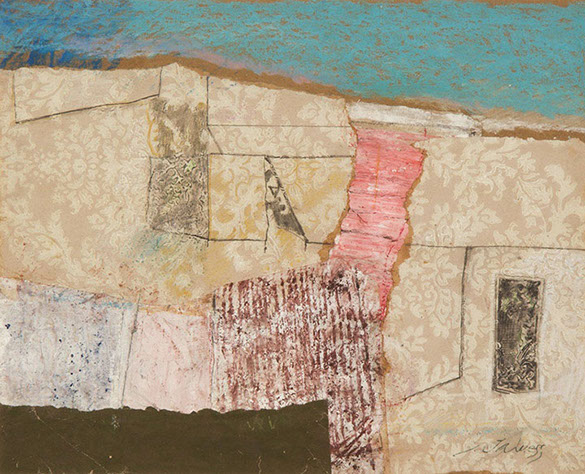

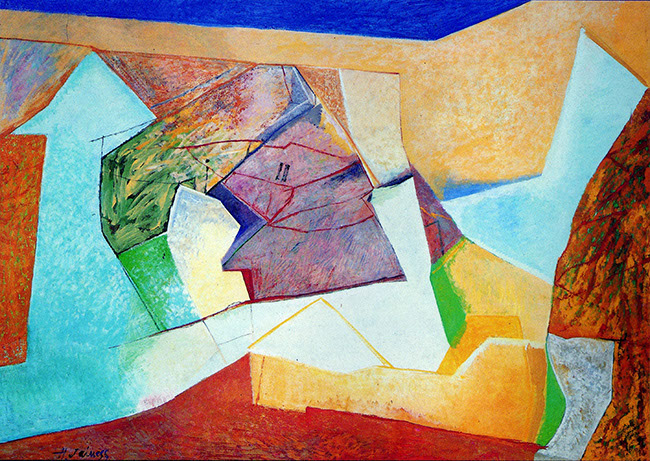
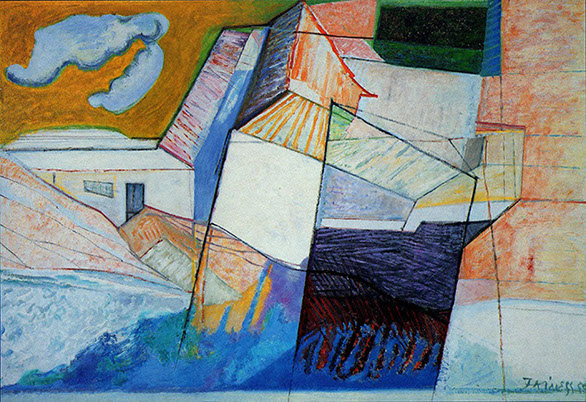
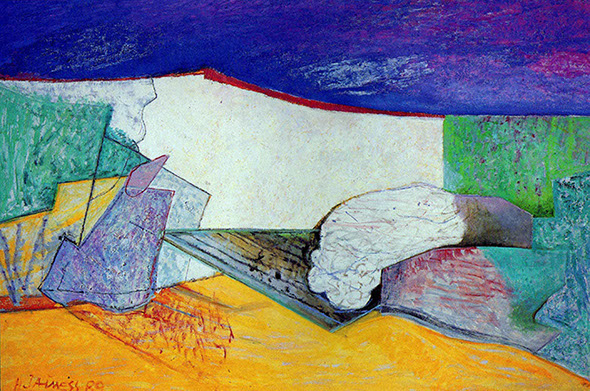
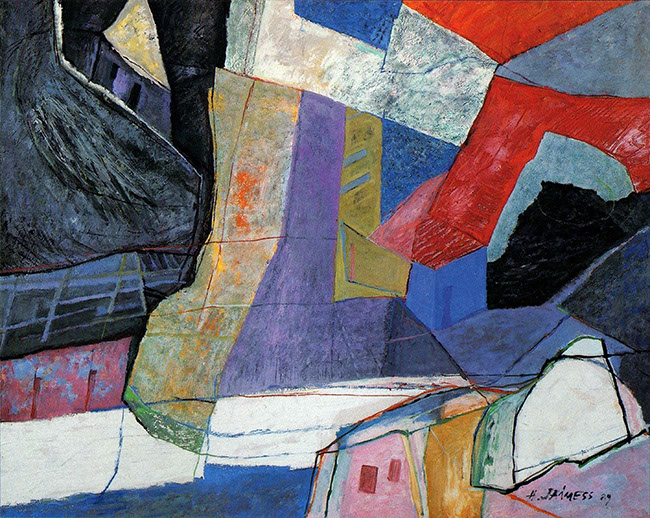
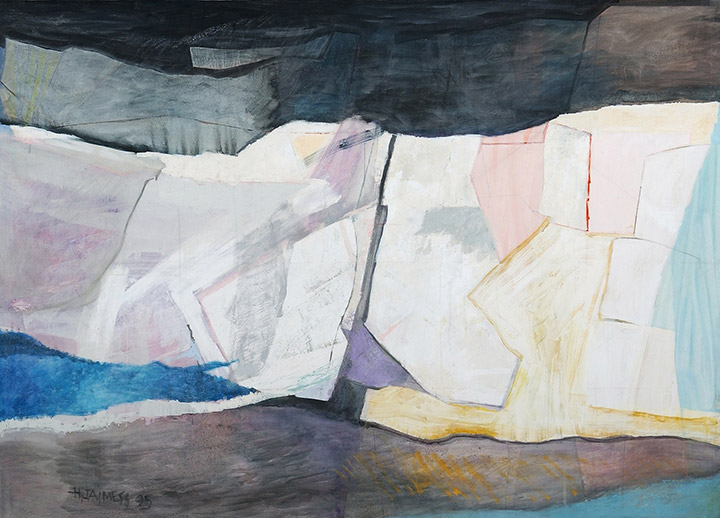
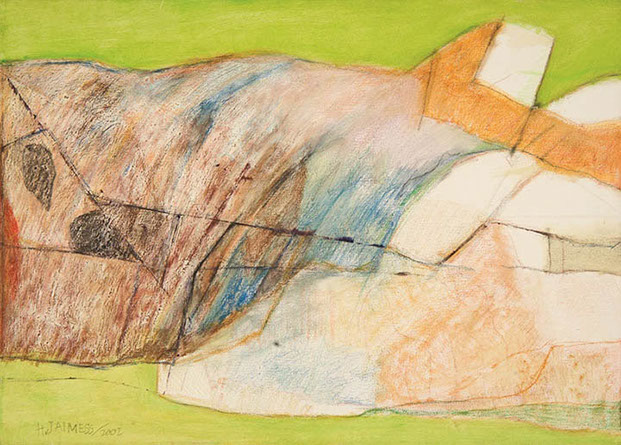
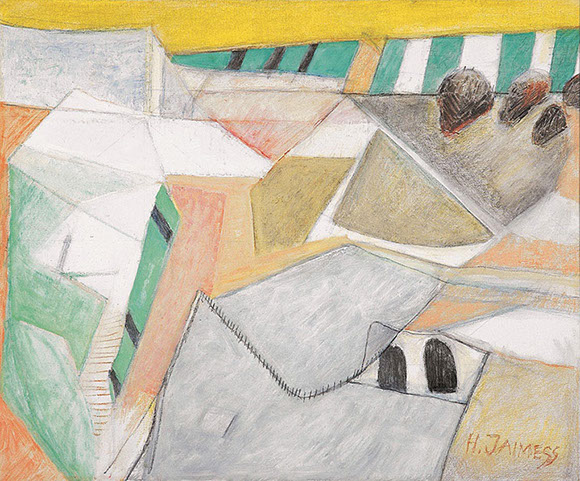









Paisaje de la casa, 1985.Colección privada.
Pueblo oblicuo I, 1987.Private collection.
Paisaje campesino, hacia 1988.Private collection.
Poblado interior, 1989.Private collection.
Paisaje de la casa II, 1989.Private collection.
Pueblo oblicuo II, 1989.Private collection.
Pie de montaña, 1995.Private collection.
Barranco, 2002.Private collection.
Espacio municipal, 2003.Private collection.
